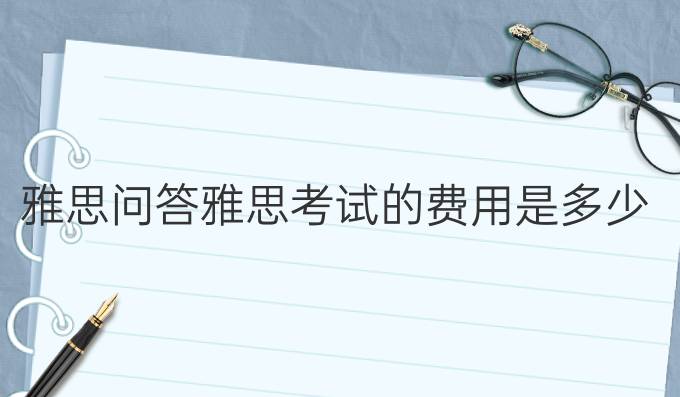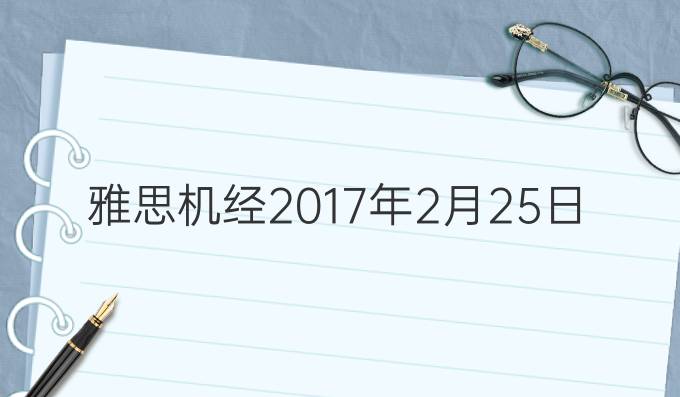
Passage 1
Spider silk
A strong, light bio-material made by genes from spiders could transform construction and industry
A
Scientists have succeeded in copying the silk-producing genes of the Golden Orb Weaver spider and are using them to create a synthetic material which they believe is the model for a new generation of advanced bio-materials. The new material, biosilk, which has been spun for the first time by researchers at DuPont, has an enormous range of potential uses in construction and manufacturing.
B
The attraction of the silk spun by the spider is a combination of great strength and enormous elasticity, which man-made fibres have been unable to replicate. On an equal-weight basis, spider silk is far stronger than steel and it is estimated that if a single strand could be made about 10m in diameter, it would be strong enough to stop a jumbo jet in flight. A third important factor is that it is extremely light. Army scientists are already looking at the possibilities of using it for lightweight, bulletproof vests and parachutes.
C
For some time, biochemists have been trying to synthesise the drag-line silk of the Golden Orb Weaver. The drag-line silk, which forms the radial arms of the web, is stronger than the other parts of the web and some biochemists believe a synthetic version could prove to be as important a material as nylon, which has been around for 50 years, since the discoveries of Wallace Carothers and his team ushered in the age of polymers.
D
To recreate the material, scientists, including Randolph Lewis at the University of Wyoming, first examined the silk-producing gland of the spider. ‘We took out the glands that produce the silk and looked at the coding for the protein material they make, which is spun into a web. We then went looking for clones with the right DNA,’ he says.
E
At DuPont, researchers have used both yeast and bacteria as hosts to grow the raw material, which they have spun into fibres. Robert Dorsch, DuPont’s director of biochemical development, says the globules of protein, comparable with marbles in an egg, are harvested and processed. ‘We break open the bacteria, separate out the globules of protein and use them as the raw starting material. With yeast, the gene system can be designed so that the material excretes the protein outside the yeast for better access,’ he says.
F
‘The bacteria and the yeast produce the same protein, equivalent to that which the spider uses in the drag lines of the web. The spider mixes the protein into a water - based solution and then spins it into a solid fibre in one go. Since we are not as clever as the spider and we are not using such sophisticated organisms, we substituted man-made approaches and dissolved the protein in chemical solvents, which are then spun to push the material through small holes to form the solid fibre.’
G
Researchers at DuPont say they envisage many possible uses for a new biosilk material. They say that earthquake-resistant suspension bridges hung from cables of synthetic spider silk fibres may become a reality. Stronger ropes, safer seat belts, shoe soles that do not wear out so quickly and tough new clothing are among the other applications. Biochemists such as Lewis see the potential range of uses of biosilk as almost limitless. ‘It is very strong and retains elasticity; there are no man-made materials that can mimic both these properties. It is also a biological material with all the advantages that has over petrochemicals,’ he says.
H
At DuPont’s laboratories, Dorsch is excited by the prospect of new super-strong materials but he warns they are many years away. “We are at an early stage but theoretical predictions are that we will wind up with a very strong, tough material, with an ability to absorb shock, which is stronger and tougher than the man-made materials that are conventionally available to us,” he says.
I
The spider is not the only creature that has aroused the interest of material scientists. They have also become envious of the natural adhesive secreted by the sea mussel. It produces a protein adhesive to attach itself to rocks. It is tedious and expensive to extract the protein from the mussel, so researchers have already produced a synthetic gene for use in surrogate bacteria.
Questions 1-5
Reading Passage 1 has nine paragraphs, A-l.
Which paragraph contains the following information?
Write the correct letter, A-I, in boxes 1-5 on your answer sheet.
1 a comparison of the ways two materials are used to replace silk-producing glands
2 predictions regarding the availability of the synthetic silk
3 ongoing research into other synthetic materials
4 the research into the part of the spider that manufactures silk
5 the possible application of the silk in civil engineering
Questions 6-10
Complete the flow-chart below.
Choose NO MORE THAN TWO WORDS from the passage for each answer.
Write your answers in boxes 6-10 on your answer sheet.
Synthetic gene grown in 6............... or 7............... |
↓
globules of 8............... |
↓
dissolved in 9............... |
↓
passed through 10............... |
↓
to produce a solid fibre |
Questions 11-13
Do the following statements agree with the information given in Reading Passage 2?
In boxes 11-13 on your answer sheet, write
11 Biosilk has already replaced nylon in parachute manufacture.
12 The spider produces silk of varying strengths.
13 Lewis and Dorsch co-operated in the synthetic production of silk
Answer Key:
1 E
2 H
3 I
4 D
5 G
6 Yeast
7 Bacteria
8 Protein
9 Chemical
10 (small) holes
11 FALSE
12 TRUE
13 NOT GIVEN
Life code: unlocked!
A
On an airport shuttle bus to the Kavli Institute for Theoretical Physics in Santa Barbara, Calif., Chris Wiggins took a colleague's advice and opened a Microsoft Excel spreadsheet. It had nothing to do with the talk on biopolymer physics he was invited to give. Rather the columns and rows of numbers that stared back at him referred to the genetic activity of budding yeast. Specifically, the numbers represented the amount of messenger RNA (mRNA) expressed by all 6,200 genes of the yeast over the course of its reproductive cycle. “It was the first time I ever saw anything like this,” Wiggins recalls of that spring day in 2002. “How to make sense of all these data?”
B
Instead of shirking from this question, the 36-year-old applied mathematician and physicist at Columbia University embraced it-and now six years later he thinks he has an answer. By foraying into fields outside his own, Wiggins has drudged up tools from a branch of artificial intelligence called machine learning to model the collective protein- making activity of genes from real-world biological data. Engineers originally designed these tools in the late 1950s to predict output from input. Wiggins and his colleagues have now brought machine learning to the natural sciences and tweaked it so that it can also tell a story-one not only about input and output but also about what happens inside a model of gene regulation, the black box in between.
C
The impetus for this work began in the late 1990s, when high-throughput techniques generated more mRNA expression profiles and DNA sequences than ever before, “opening up a completely different way of thinking about biological phenomena,” Wiggins says. Key among these techniques were DNA microarrays, chips that provide a panoramic view of the activity of genes and their expression levels in any cell type, simultaneously and under myriad conditions. As noisy and incomplete as the data were, biologists could now query which genes turn on or off in different cells and determine the collection of proteins that give rise to a cell’s characteristic features- healthy or diseased.
D
Yet predicting such gene activity requires uncovering the fundamental rules that govern it. “Over time, these rules have been locked in by cells,” says theoretical physicist Harmen Bussemaker, now an associate professor of biology at Columbia. “Evolution has kept the good stuff.” To find these rules, scientists needed statistics to infer the interaction between genes and the proteins that regulate them and to then mathematically describe this network’s underlying structure-the dynamic pattern of gene and protein activity over time. But physicists who did not work with particles (or planets, for that matter) viewed statistics as nothing short of an anathema. “If your experiment requires statistics,” British physicist Ernest Rutherford once said, “you ought to have done a better experiment.”
E
But in working with microarrays, “the experiment has been done without you,” Wiggins explains. “And biology doesn't hand you a model to make sense of the data.” Even more challenging, the building blocks that make up DNA, RNA and proteins are assembled in myriad ways; moreover, subtly different rules of interaction govern their activity, making it difficult, if not impossible, to reduce their patterns of interaction to fundamental laws. Some genes and proteins are not even known. “You are trying to find something compelling about the natural world in a context where you don't know very much,” says William Bialek, a biophysicist at Princeton University. “You're forced to be agnostic.” Wiggins believes that many machine- learning algorithms perform well under precisely these conditions. When working with so many unknown variables, “machine learning lets the data decide what's worth looking at,” he says.
F
At the Kavli Institute, Wiggins began building a model of a gene regulatory network in yeast - the set of rules by which genes and regulators collectively orchestrate how vigorously DNA is transcribed into mRNA. As he worked with different algorithms, he started to attend discussions on gene regulation led by Christina Leslie, who ran the computational biology group at Columbia at the time. Leslie suggested using a specific machine-learning tool called a classifier. Say the algorithm must discriminate between pictures that have bicycles in them and pictures that do not. A classifier sifts through labeled examples and measures everything it can about them, gradually learning the decision rules that govern the grouping. From these rules, the algorithm generates a model that can determine whether or not new pictures have bikes in them. In gene regulatory networks, the learning task becomes the problem of predicting whether genes increase or decrease their protein-making activity.
G
The algorithm that Wiggins and Leslie began building in the fall of 2002 was trained on the DNA sequences and mRNA levels of regulators expressed during a range of conditions in yeast-when the yeast was cold, hot, starved, and so on. Specifically, this algorithm-MEDUSA (for motif element discrimination using sequence agglomeration)-scans every possible pairing between a set of DNA promoter sequences, called motifs, and regulators. Then, much like a child might match a list of words with their definitions by drawing a line between the two, MEDUSA finds the pairing that best improves the fit between the model and the data it tries to emulate. (Wiggins refers to these pairings as edges.) Each time MEDUSA finds a pairing, it updates the model by adding a new rule to guide its search for the next pairing. It then determines the strength of each pairing by how well the rule improves the existing model. The hierarchy of numbers enables Wiggins and his colleagues to determine which pairings are more important than others and how they can collectively influence the activity of each of the yeast's 6,200 genes. By adding one pairing at a time, MEDUSA can predict which genes ratchet up their RNA production or clamp that production down, as well as reveal the collective mechanisms that orchestrate an organism's transcriptional logic.
Questions 1-6
The reading passage has seven paragraphs, A-G
Choose the correct heading for paragraphs A-G from the list below.
Write the correct number, i-x, in boxes 1-6 on your answer sheet.
List of Headings i The search for the better-fit matching between the model and the gained figures to foresee the activities of the genes ii The definition of MEDUSA iii A flashback of an commencement for a far-reaching breakthrough iv A drawing of the gene map v An algorithm used to construct a specific model to discern the appearance of something new by the joint effort of Wiggins and another scientist vi An introduction of a background tracing back to the availability of mature techniques for detailed research on genes vii A way out to face the challenge confronting the scientist on the deciding of researchable data viii A failure to find out some specific genes controlling the production of certain proteins ix The use of a means from another domain for reference x A tough hurdle on the way to find the law governing the activities of the genes |
Example
Paragraph A iii
1 Paragraph B
2 Paragraph C
3 Paragraph D
4 Paragraph E
5 Paragraph F
6 Paragraph C
Questions 7-9
Do the following statements agree with the information given in Reading Passage 1?
In boxes 7-9 on your answer sheet, write
TRUE if the statement is true
FALSE if the statement is false
NOT GIVEN if the information is not given in the passage
7 Wiggins is the first man to use DNA microarrays for the research on genes.
8 There is almost no possibility for the effort to decrease the patterns of interaction between DNA, RNA and proteins.
9 Wiggins holds a very positive attitude on the future of genetic research.
Questions 10-13
Summary
Complete the following summary of the paragraphs of Reading Passage, using No More than Three words from the Reading Passage for each answer. Write your answers in boxes 10-13 on your answer sheet.
Wiggins states that the astoundingly rapid development of techniques concerning the components of genes aroused the researchers to look at 10................... from a totally new way 11................... is the heart and soul of these techniques and no matter what the 12................... were, at the same time they can offer a whole picture of the genes' activities as well as 13................... in all types of cells. With these techniques scientists could locate the exact gene which was on or off to manipulate the production of the proteins. |
Answer Key:
1 ix
2 vi
3 x
4 vii
5 v
6 i
7 NOT GIVEN
8 TRUE
9 NOT GIVEN
10 biological phenomena
11 DNA microarrays
12 (myriad) conditions
13 their expression levels
.png)






